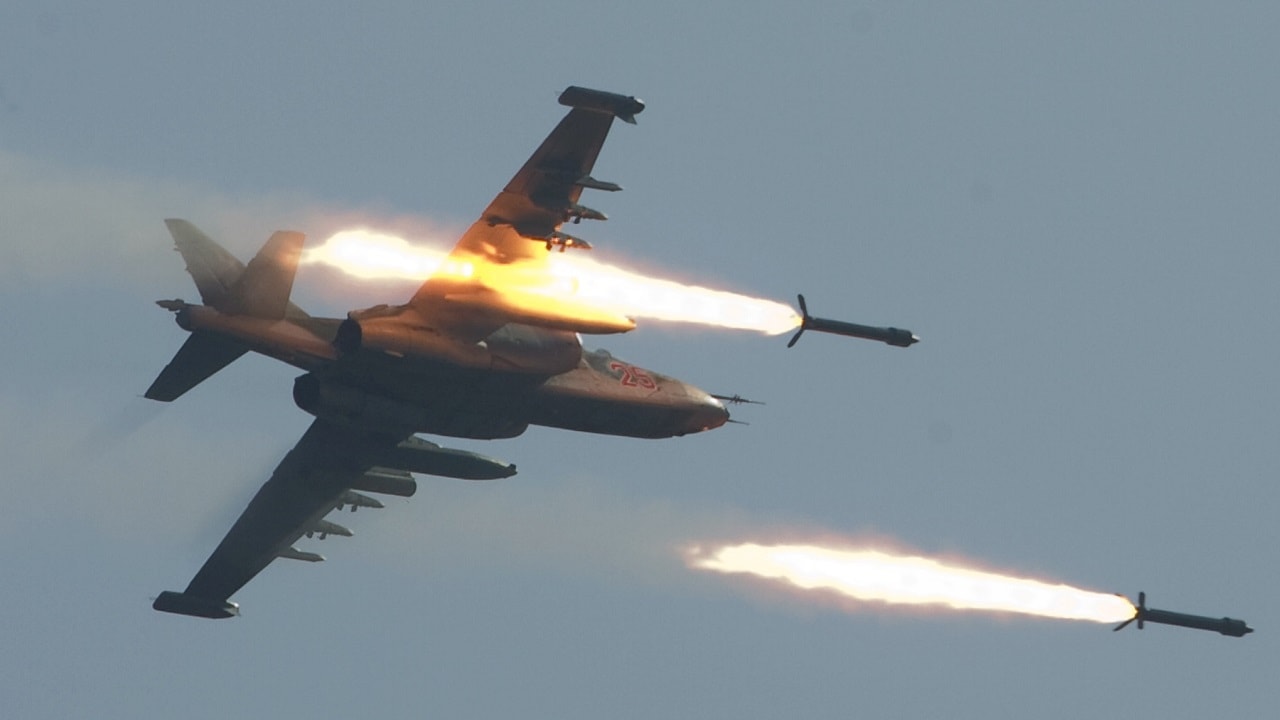Meet the Su-25: U.S. ground troops caught under enemy fire over the past several decades of battle have cultivated and regularly expressed an unparalleled love, reverence, and appreciation for the life-saving A-10, an aircraft known as a “flying tank.”
Those U.S. soldiers and servicemembers saved by the A-10 will likely be quick to tell you the Warthog has no equivalent anywhere in the world.
Russia Has an Equivalent
What about Russia?
Does their Air Force have a “flying tank” equivalent? Seems unlikely, yet the Soviet-era Su-25 is a combat-tested workhorse with a long history of supporting ground troops in military conflict.
First emerging in 1975, the Sukhoi Su-25 is a single-seat, twin-engine jet designed to provide close air support; the aircraft therefore not surprisingly spent many years attacking the Afghan Mujahideen in Afghanistan during the Soviet-Afghan war and also supported Russian forces in the war in Chechnya.
Su-25s, called Frogfoot by the West, have also been widely exported and served in support of the Macedonian and Iraqi Air Forces as well as with a number of former Soviet republics such as Georgia, which broke off when the Soviet Union collapsed.
An article in Military-Today says the Su-25 has been exported to Angola, Bulgaria, Congo, Cote d’Ivoire, Czech Republic, Eritrea, Ethiopia, Iraq, Macedonia, North Korea, Peru, Slovakia, Sudan, and possibly some other countries.
Comparable, Yet Smaller, to the A-10
With a 47-foot wingspan, the Su-25 is smaller than the A-10, yet able to load up hardpoints with a heavy payload. The Su-25’s 42,000-pound max takeoff weight makes it about 10,000 pounds lighter than the A-10, which can take off with 50,000 pounds, yet both planes have similar attributes. Their ranges are roughly equivalent in the range of 600 to 800 miles and they are both heavily armed.
The Su-25 fires a 30mm Gryazev-Shipunov GSh-30 autocannon which may not compare favorably with the A-10’s famous 30mm cannon aligned directly below the nose of the aircraft to enable a straight-on attack.
Available specs don’t fully specify the materials used for the Su-25 fuselage, and the aircraft is doubtless built to withstand small arms fire, yet it may not rival the A-10 famous titanium hull, able to absorb massive amounts of incoming fire.
Of equal significance, the Su-25 may not have comparable built-in redundancy to enable the aircraft to keep flying and operating even when key components are destroyed by enemy attacks.
The Russian Air Force operates a Su-25 fleet of roughly 250 aircraft and more modern variants have been upgraded with improved technologies. Russian Su-25s continue to be used in the ongoing Russian invasion of Ukraine, and available reports indicate a number of them have been destroyed and shot down by Ukrainian forces using Stinger missiles or MANPADs.
Multiple reports of destroyed Su-25s in Ukraine might suggest that the aircraft does not have built-in redundancies or protections equivalent to the A-10.
Kris Osborn is the Military Affairs Editor of 19FortyFive and President of Warrior Maven – Center for Military Modernization. Osborn previously served at the Pentagon as a Highly Qualified Expert with the Office of the Assistant Secretary of the Army—Acquisition, Logistics & Technology. Osborn has also worked as an anchor and on-air military specialist at national TV networks. He has appeared as a guest military expert on Fox News, MSNBC, The Military Channel, and The History Channel. He also has a Masters Degree in Comparative Literature from Columbia University

